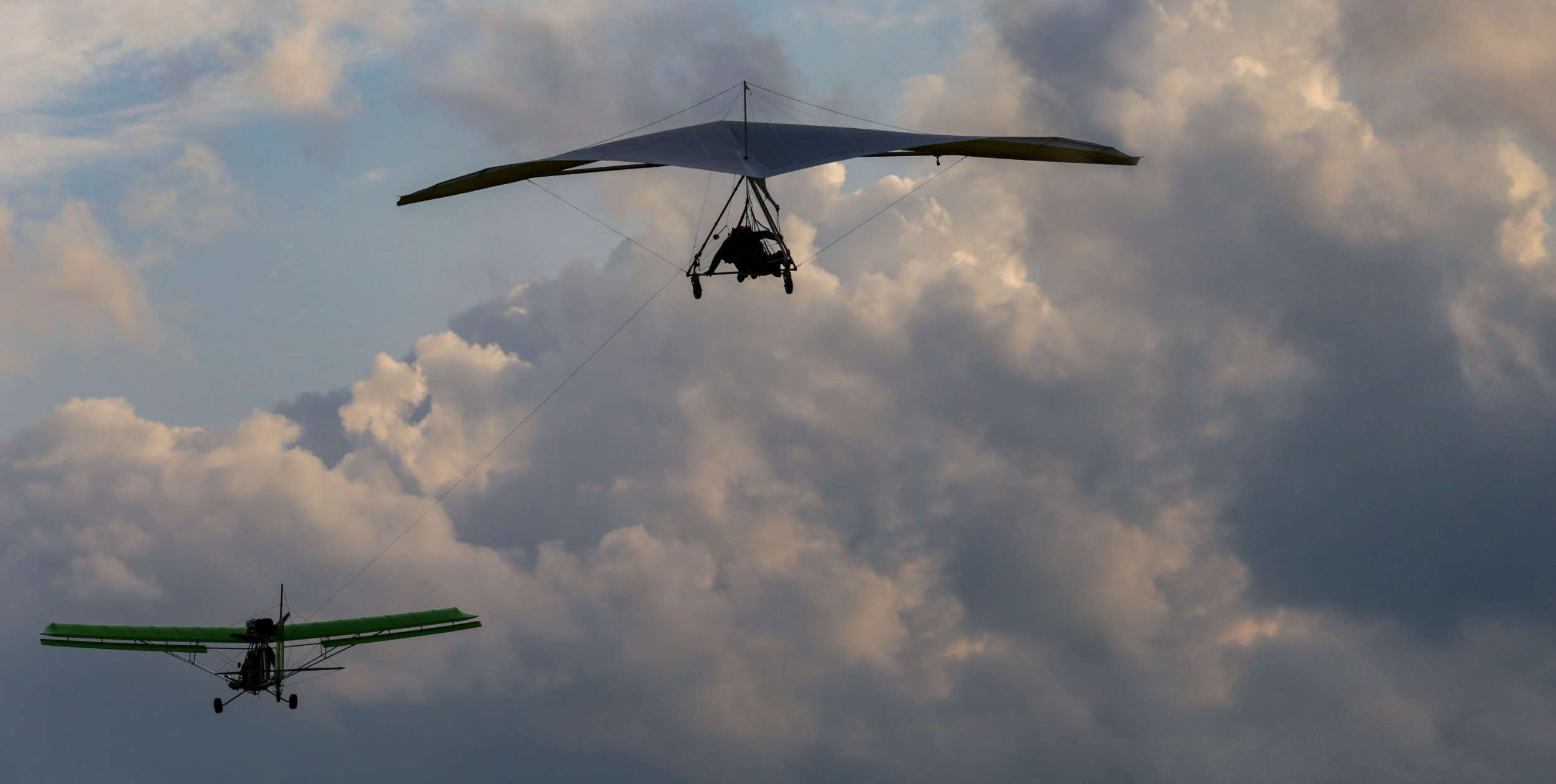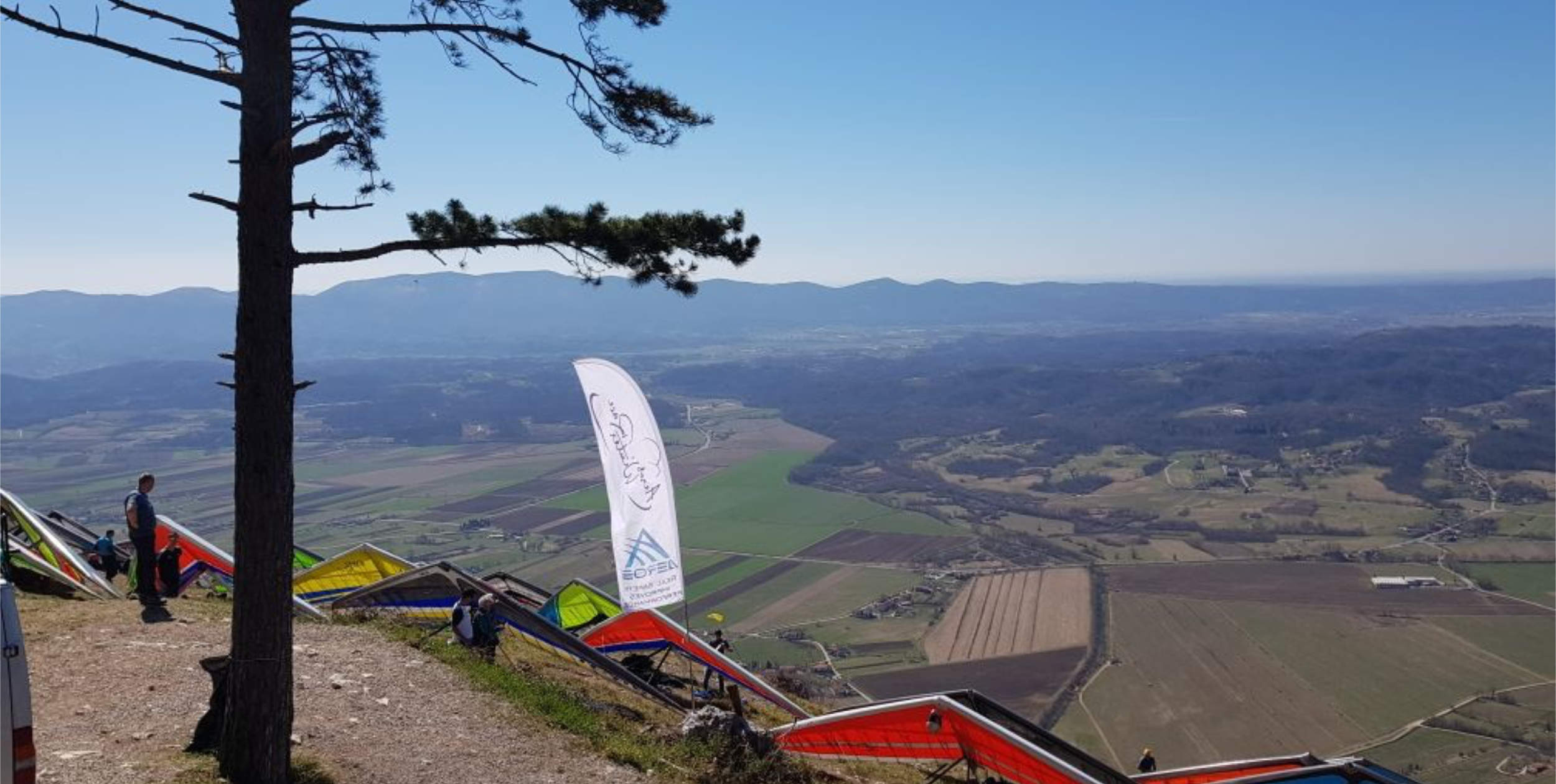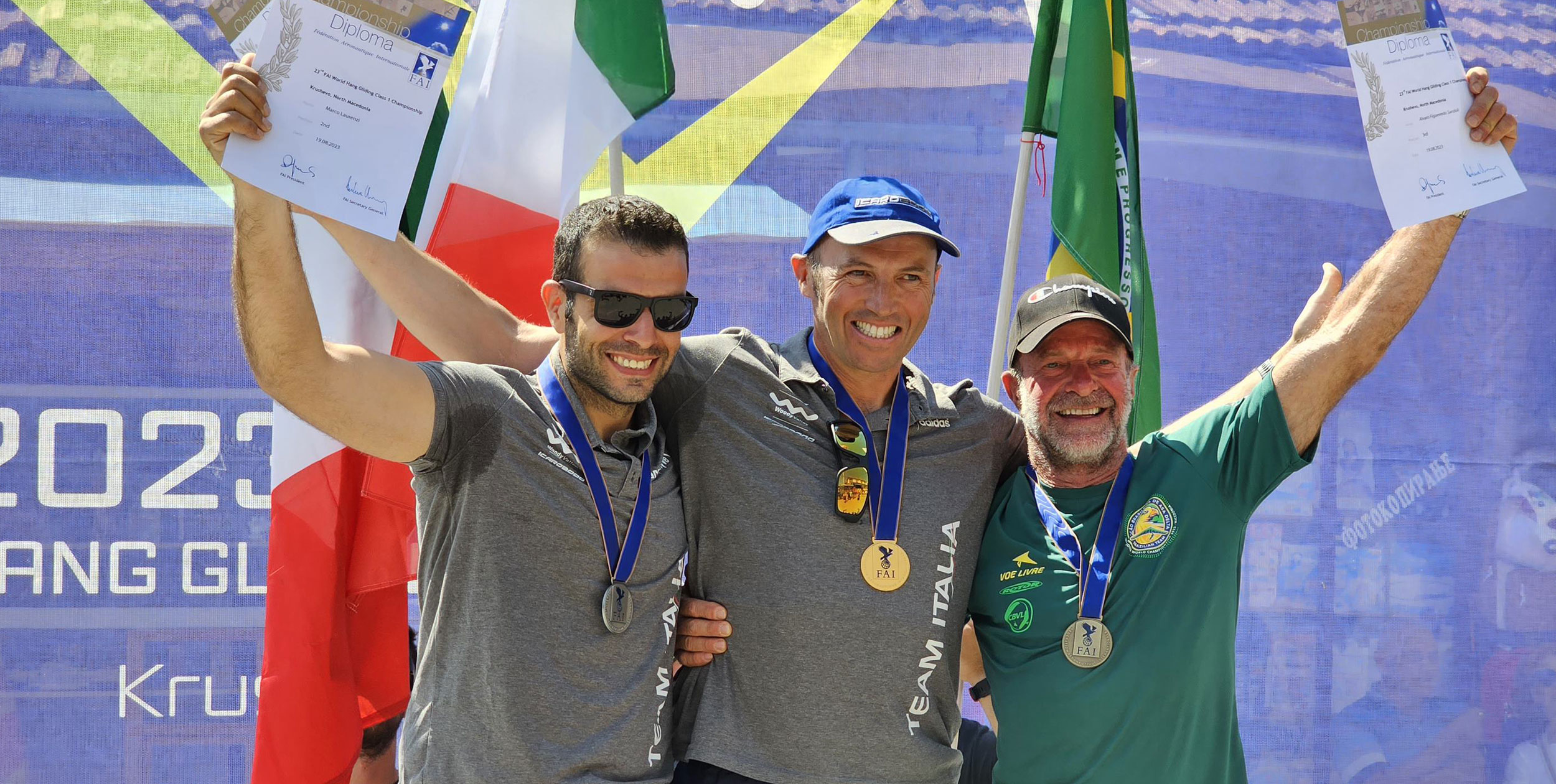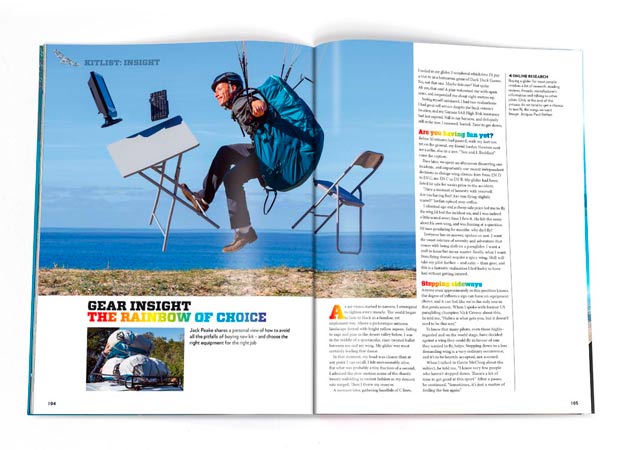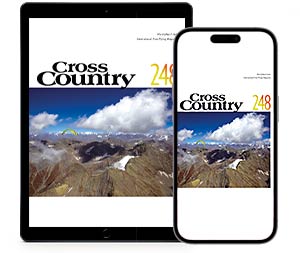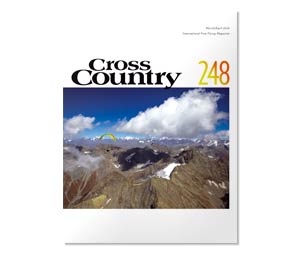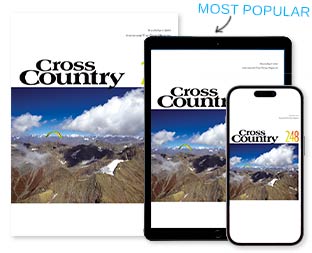These days Felix Woelk is one of paragliding’s best known photographers – he shot this video for Gradient
Ace hang gliding photographer Felix Wolk shows us how to rig a camera for that most classic of hang gliding perspectives, the wing mounted shot. Published in Cross Country magazine in 2004
Today, my hang glider reminds me more of a tank than of a wing. None of the sensitive handling and its delightful climb performance, which gave me such pleasure yesterday seems to be left.
Instead, I’m seriously thinking of grabbing one of the downtubes to improve the efficacy of my piloting. Up to now, I have barely managed three circles in a thermal without getting either thrown out or diving to the inside. If any fellow pilot was to mention tonight that my flying was crap, I would simply have to agree.
But today, my personal priorities are different. Despite more fighting than piloting, I’m now about to climb up, slowly but surely, and whilst slowing down to stall speed prick up my ears with high expectations…The barely audible sound of a camera’s shutter might seem tiny and unimportant, but for a photographer, the whole day depends on it.
Only now is it possible to see if the hours spent mounting the camera was just a waste of energy or not. If a push on the button results in nothing but endless silence, the point is reached where the photographers´ mood sinks to the bottom of the the deepest of valleys: no pictures and a broken down camera system hanging on the glider for the rest of the day.
Today, the camera responds and I can hear the soft clicking of the shutter release. I have a green light for the rest of the day. The clear air of autumn fills the valleys, thermals reach altitudes of 3600 metres and soon it’s no longer the location and quality of thermals that bother my mind. It’s the photographic suitability of the landscape as regards the scenery, light conditions and contrast – the search for a perfect picture that consigns bad handling further to recesses of my mind.
The Wing Mount
Some of the best shots taken in hang gliding come from mounting the camera outboard along the wing so it looks along the wing past the pilot towards the other tip. This perspective is perfect for catching the steeper angles and stresses of a steep turn whilst also capturing the terrain below.
For these type of shots you need a solid, stable place to fix the camera which also remains free of vibration at all speeds. For a solid mount the wing tube offers a good location, as well as the cross bar.
Added reinforcement at both ends of my glider’s cross bar reduces the risk of damage caused by overly tightening the mount. Obviously, for every location you plan to attach the mount you need free access to do so.
For this reason my glider was specified with three extra zips in the under surface of the sail, allowing a camera to be mounted at three different points along the wing. With a standard glider, there are fewer possibilities although most gliders have a zip close to the wing tube and about half way along it to facilitate short-packing. This usually makes for a good place to fit a mount on the wing tube.
How far away from the pilot the camera can be fixed on the wing depends on the weight of the whole mount and the choice of the lens. Since I’m normally working with heavy mounts and SLR cameras, I don’t usually go further than half way along the wing due to the weight.
With the camera so close it’s necessary to compensate for the short distance with a wide angle lens. The advantage of a heavy mount is stability and less risk of blurred pictures, as there´s a bigger moment of inertia in a head wind.
The wing mount also demands a counter-weight. A relatively long distance between the mount and the pilot leads to big leverage along the longitudinal axis of the glider. The counterweight should be fixed to the opposite wing at the same point where the camera equipment is, and it should be a tiny bit heavier than the mount.
This higher weight compensates for the mount’s drag during flight and increases the chance of balanced flight characteristics. Concerning the adjustment of the camera, there´s one more point to think about: if the camera body is placed in front of the leading edge, it might be the first part to crash in case of a bad landing, when the glider’s nose kisses the earth.
Effects on flight characteristics
The further away from the pilot the equipment is mounted, and the heavier it is, the worse will be the glider’s handling.
This comes as no surprise after lifting the glider onto your shoulders with all this gear attached. However, far more important than worrying about the overall weight is the need to balance out the centre of gravity with the counter-weight.
This prevents the glider from turning to one side during flight, and is essential for a safe launch. During the accelerating phase of the launch, the extra weight and inertia mean there’s little possibility of influencing the glider’s direction though a steep take off place, and a strong breeze averts this danger.
In contrast, a flat take off and no wind would be a poor choice for your first photographic experiments with this set up. This holds true for most other mounts as well.
Due to the considerable additional weight, flying a wing with this sort of rig is not a great deal of fun. There is a big delay in the glider’s response to your movements.
To avoid being tipped out of thermals or diving to the inside it´s necessary to react much earlier and more powerfully than normal, and it’s rare for the glider to behave the same in left hand turns as it does in right hand ones.
The best way is to find out which direction seems more comfortable and then not to change it whilst thermalling. You´ll have far less of a problem with these issues if you use a light weight compact camera as opposed to a big heavy SLR. Clearly, the lighter the camera, the lighter the mount can be.
All in all though, there are few complications concerning the landing with this sort of camera mount, provided the wing has been balanced out in a conscientious way.
A slower rotation around the glider’s transverse axis, as a result of the higher weight, demands a little bit more determination at the point of the stall. Furthermore, the financial risk of a bad landing does wonders for concentrating the mind on a perfect approach.
Shots from the wing whilst in level flight are, of course, the classic perspective for the timeless hang gliding picture: the profile of a pilot at awesome altitudes with the world expanding beneath him. Lying prone with his nose in the wind, he’s gliding bold and fearless through the air.
A breathtaking scene to open the layman’s eyes to the fact that this is the sport of all sports. Older observers may see this shot and consider that they’ve missed something in their lives, others promise to give up everything, if only they too could do this.
Slightly less common, but having a particular appeal, are more detailed images showing not only the action and grace of the sport, but also the stunning landscapes below.
These kind of photographs mostly have to be shot in a certain glider position (steep tuns and high bank angles) and with the correct combination of object distance and the chosen lens these shots can lead to amazing effects: a feeling of getting sucked into the picture.
With correct exposure to bring out bright shining colours and perfect sharpness, these images are always my personal favourites. But whatever type of photograph stunning enough to be appreciated by the general public, the only people who really get the big picture with the steeper turns, are pilots.
• Got news? Send it to us at news@xccontent.local. Fair use applies to this article: if you reproduce it online, please credit correctly and link to xcmag.com or the original article. No reproduction in print. Copyright remains with Cross Country magazine. Thanks
Subscribe to the world’s favourite hang gliding and paragliding magazine

